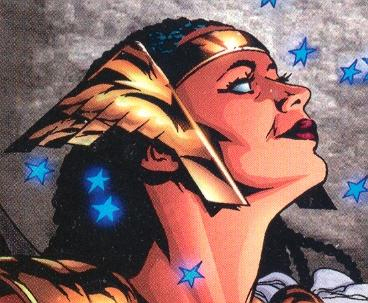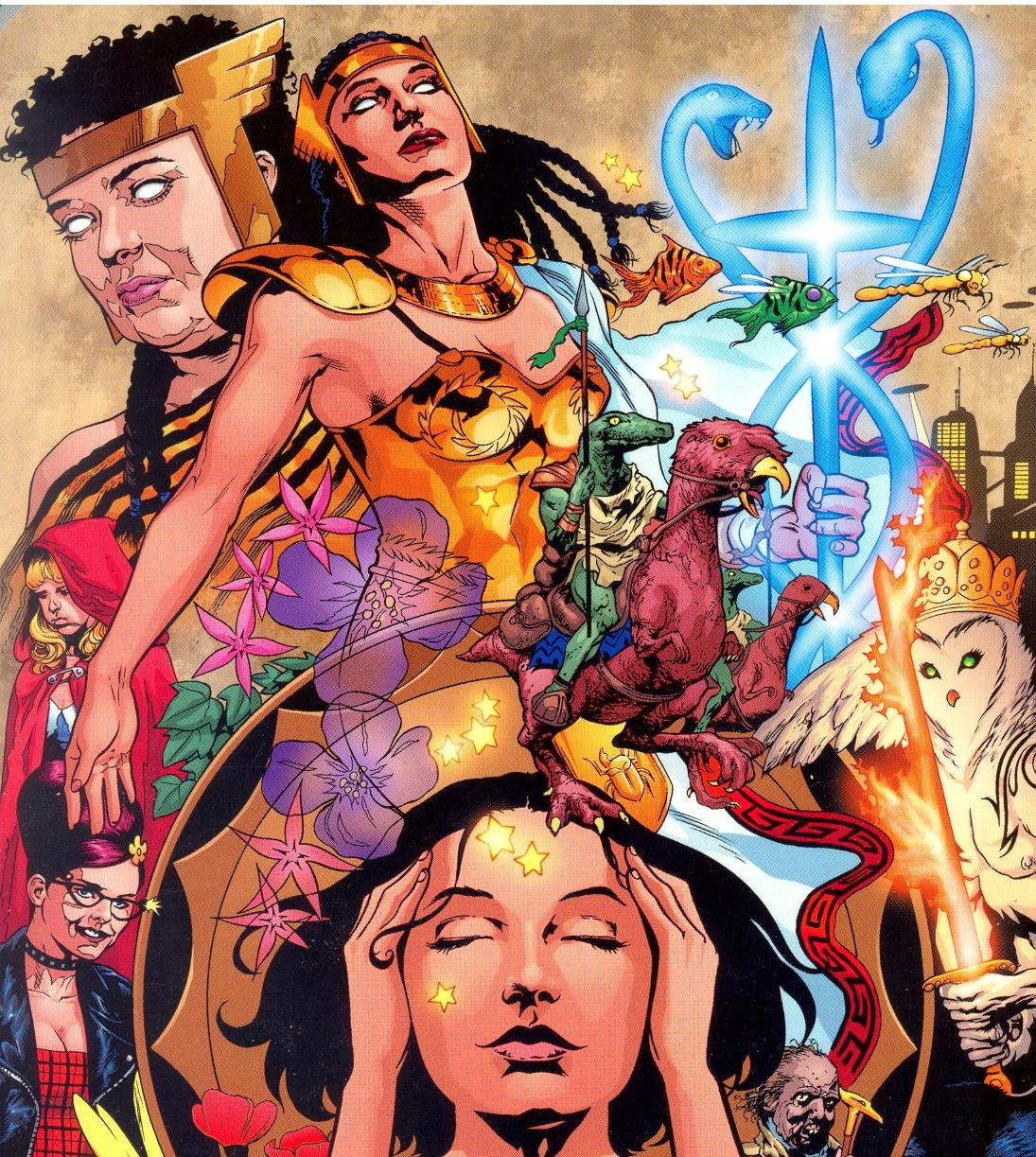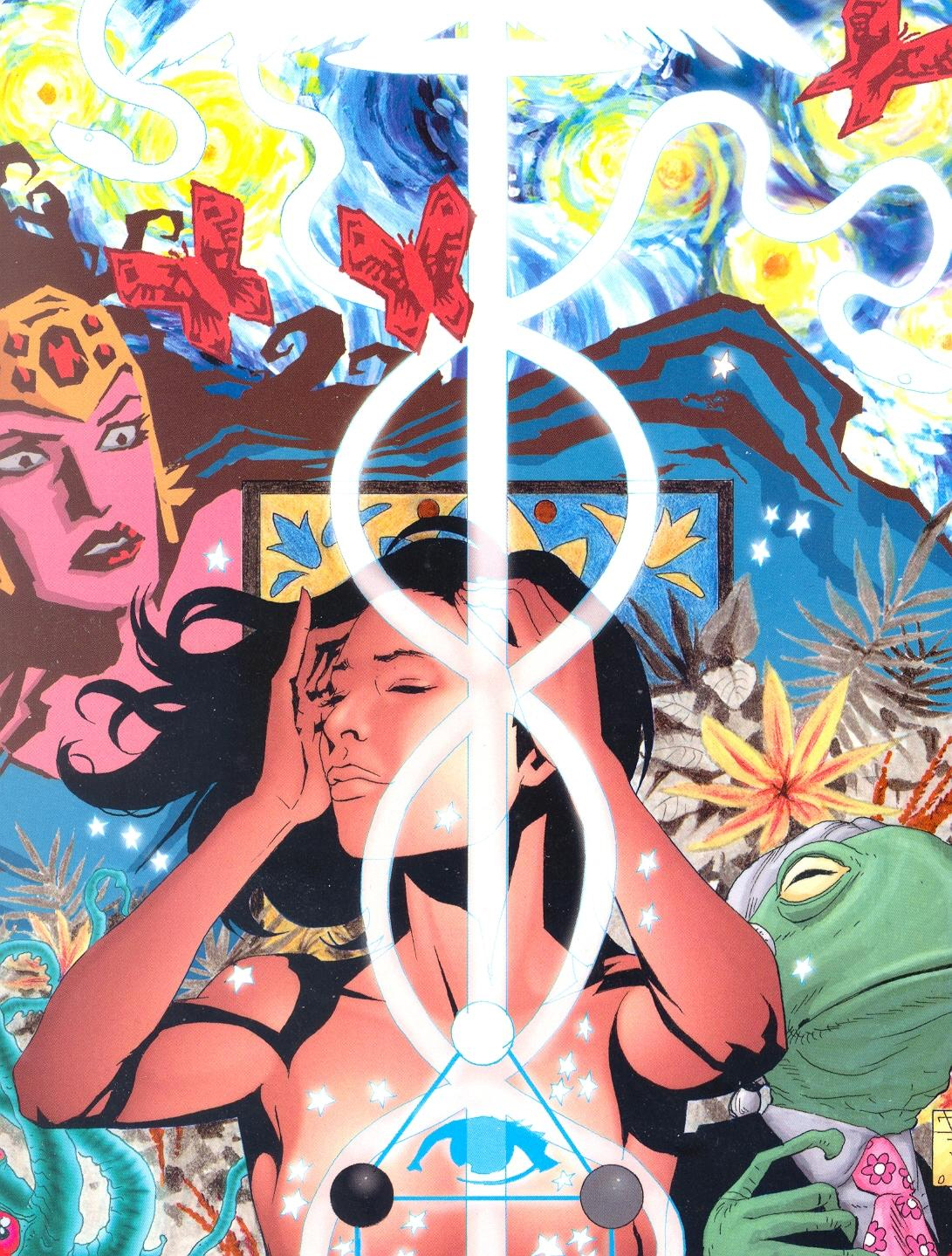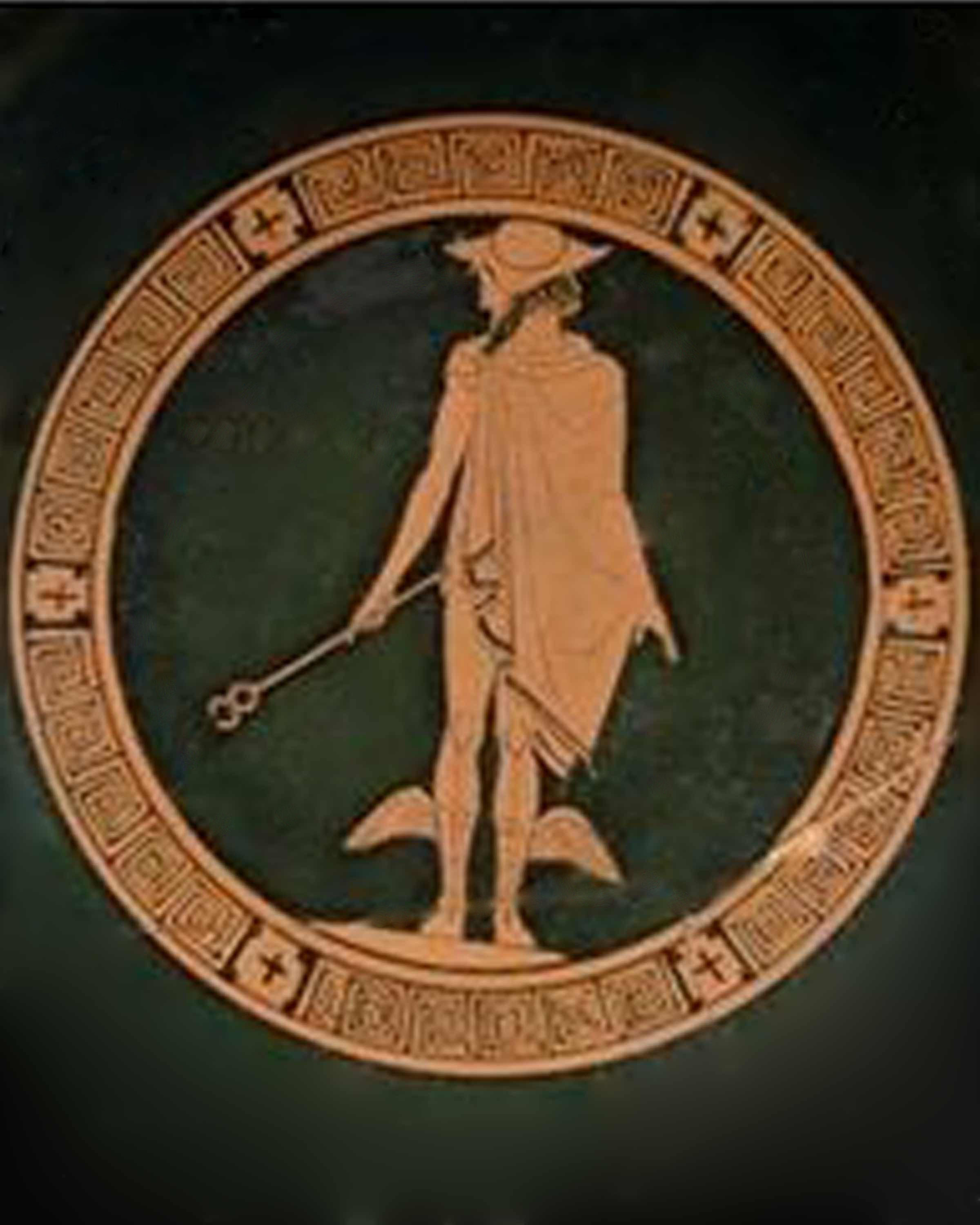Paul's review of Promethea by Alan Moore
In this gorgeous, often brilliant series, now complete in five volumes, Moore signals his return to deconstructionist super-hero comics. Anyone with an interest in tarot symbolism, especially in its Thoth-Crowley mode, and its connection with general occultism will find Alan Moore's Promethea a wonderful guide to the basic symbolism of the major Arcana and the tree of life. In fact Promethea’s particular powers are based on the four suit-elements, earth, air, water, fire.
The general comic book audience was somewhat put off by what for them was the pseudo-mysticism of Moore, and I have not read what the general occult audience might think of this literary graphic novel adaptation of basic occult themes, but I find that if one is knowledgeable in western magicks and tarot, there will be many useful insights gleaned along the way while reading this wonderful collection of comics. The artistry of Williams and Gray provides some unexpected visual interpretations of the Sephiroth.

Anyone who reads in the occult or magical literature must be aware of that we are talking about a particular cultivation of the imagination. People can study this literature quite a long time before it wakes up inside them. I am sure that there are even many who never experience any inner awakening. But the imagination is a powerful source of knowledge and interpersonal transformation that can channel power this little comic book suggests playfully. The more didactic parts of the story beginning in book 2 and composing the bulk of books 3 and 4 is a tour of the inner worlds based on the meaning of the Tree of Life. Each Sephiroth is given some due as Sophie Bangs and a previous incarnation of Promethea travel the full tree of life. The paths between the stations are analogous to Major Arcana as channels of planetary-astral energy. This Gnostic view, though not as oppressive as classical Gnostic views of the world as anti-creation, will ring true in its general formulation for most occultists unless they are suffering from some forms of dogmatic literalisms or pre-formed ideological fixated prejudice, not as rare as one might think. So take a look at the occult world a-new through the eyes of the comic book hero Promethea.
Promethea (Book 1) by Alan Moore, J. H. Williams III, Mick Gray, and Charles Vess (Wildstorm) The story begins with a prologue set in Alexandria, 411 A.D., in which a strange old man with mystical powers saves his daughter from a group of killer monks. We then jump ahead to a New York existing in the year 1999 that has cabs hovering without wheels, police in flying saucers, and a successful comic book about the "Weeping Gorilla." Here we meet Sophie Bangs, just an ordinary college student in a weirdly alternative and scientistic New York, who is writing a term paper for a class on folklore and visits Barbara Shelley, the widow of the last guy to write the Promethea comic book. However, Sophie gets a big time brush off and the following advice from Barabara: "You don't wanna go looking for folklore. And you especially don't want folklore to come looking for you."
There is something of misdirection to this advice, not only because it is too late for Sophie, who is going to become the new "host" for Promethea, but also because ultimately Moore is not really writing about folklore here but about the female super hero. Ignoring the cautionary warning as all good heros do, Bangs continues her studies and is almost killed by a shadowy creature (Smee) when she learns the secret of Promethea. Surviving the encounter, Sophie soon finds herself transformed into Promethea, a living story of many incarnations and the human embodiment of the reality of imagination. Her incarnation has hardly begun when she must perforce master the secrets of her predecessors before she is destroyed by several of Promethea's ancient enemies.
Moore, helped by the team of Williams and Gray, forged a stunning substitute world dominated by scientistic ideas with a nod to superheroes With the Five Swell Science Guys representing classic comic vigilantism. Most graphic novel readers find the exploration of the inner world of cosmogonic imagination (Immateria) a bit dull and lacking the easy conflict of good versus evil, that often drives the action and narrative drive. However we tarotists should find a careful reading and appreciation of the visual clues useful reminders of profound tarot meanings and, I suggest even suggests some original ones that have been not thoroughly commented upon before.
The first three stories deal with Sophie getting indoctrinated into the ways of Promethea, although there are always more questions than answers. Meanwhile the city's resident superheroes, the Five Swell Guys, are dealing with their arch-enemy the Painted Doll. But in issue #4, "A Faerie Romance," Moore adds a great conceit to the mix, as the various incarnations of Promethea sit around in the Immateria discussing the newcomer. The idea of the archetype becomes reinforced, not by going back to the beginning, but rather by showing how each generation has had a Promethea it could call its own. This is where the series slips into the high gear and exhibits visionary promise.

Promethea (Book 2) by Alan Moore, J. H. Williams III, Mick Gray, and Jose Villarrubia (Wildstorm) This collection follows Sophie Bangs, the latest in a long line of Prometheas, on a winding journey of discovery as she continues to learn the secrets of the Immateria and the nature of her enhanced self herself. Her transcendental adventure brings young Sophie to realms of magic and wonder that none have experienced before. Collecting issues #7-12, this book contains such fan-favorite stories as "Rocks and Hard Places," where Sophie learns about the Promethea named Bill, and "Sex, Stars, and Serpents," where Sophie learns first-hand the nature of Tantric sex magick, from a skid row denizen named Jack Faust (nothing is explicitly shown but boobies), with a discussion of the theory and practice of magical symbolism and chakras ... which leads to a priceless last-page joke.
One entire chapter in this volume is given over to an exploration of humanity's history through the metaphor of a modified tarot deck, as told by the snakes on Promethea's caduceus, Mike and Mack (Micro and Macro - who speak in rhyming quatrains of iambic pentameter, flawlessly, each keeping his recognizable viewpoint towards either the big picture or the minutiae). Along the bottom of each page is both an anagram of Promethea's name that is pertinent to that page's content, and a serialized joke whose phrases again echo and reinforce the other three threads on each page.
In order to maintain its dual purpose of entertainment and esoteric initiation it is not even as traditionally-narrative as the first volume. Each issue becomes much more dreamlike, and dense, and strange, in a way that is entirely appropriate for a story that attempts to visualize all the worlds of the Kabbalah through the idealized avatar of Sophie Promethea.
Much of Prometheus books 3 and the book 4 becomes a gigantic road trip through various Sephiroth. Promethea (Book 3) by Alan Moore, J. H. Williams III, and Mick Gray (Wildstorm) In the third volume of this award-winning series, things only get worse for the college co-ed Sophie Bangs Promethea as she and Barbara, the last woman to hold the title of Promethea, embark on a spiritual and cosmic journey through the many different realms of Heaven and Hell. The story here involves Sophie-Promethea leaves earth to go on a journey through the realms of the soul to find Barbara-Promethea (one of the deceased Prometheas), who has wandered off in search of her deceased husband sometime during Book 2. Meanwhile the 1920's Promethea merges with Sophie's roommate to become yet another Promethea to maintain order in the Malkuth world while Sophie-Promethea is away on her journey of initiation into the mysteries of the Tree of Life and its 22 paths. Now as the two compatriots(Sophie-Promethea and Barbara-Promethea eventually team to look for Barbara-Promethea’s husband. They experience mind-altering visions and encounter legendary and historic figures from the past, they must find a way home or be lost on the metaphysical plane of existence for all eternity. They ascend several of the 10 nodes in the Kabbalist Sefiroth, each of which corresponds to a plane of reality. They run into Greek and Hindu Gods, Aleister Crowley, Death, various demons, and so forth. So there's a bunch of discussion about magick and metaphysics along the way which if paid attention to offer some significant insights into the meaning of the tarot and the tree of life.
Promethea (Book 4) by Alan Moore, J.H. Williams III and Mick Gray (Wildstorm) The conclusion of Promethea's sprawling tour of the higher realms of the spirit is collected in this reprinting #19-25! The pace picks up in this continuation of the Promethea saga, starting where P3 left off. Sophie-Promethea is wandering the ethereal realms and discovering the nature of the Sephiroth. We are given a view of merging with the Godhead that deserves close reading. Also one learns that even with a complete initiation into the nature of cosmic reality, one should not expect to come back into this world and expect anyone to care one way or the other. Stacy-Promethea is on duty back in the Malkuth, and getting to like her job, taking a hard-ass, confrontational assault on crime in her superhero persona, that causes the FBI to want to track her down. Sophie-Promethea returns with a vision of her cosmic destiny to usher in the Apocalypse, (a role she does not truly understand or want to fulfill, so instead she reconciles with her mother) Stacy-Promethea doesn’t want to give up her kick-ass powers, so the two incarnations have a conflict, leads to a trial in Immateria presided over by a slightly senile Solomon.

Both Stacy and Sophie end up being hunted down by the FBI. Sophie goes on the lam in another city working at a video store, eventually she is forced to take up the mantle of Promethea again and fulfill her destiny to bring forth the Apocalypse.
Promethea - Book 5 by Alan Moore and J. H. Williams (Wildstorm) the final Promethea collection features issues #26-32, plus a poster insert showing issue #32 in all its glory! This is the story of the end of the world, but it is an end of the world that has many a levels and aspects to it that is unlike anything you’re likely to have considered before. In many ways all of the inner esoteric workings of the previous chapters plot out an unexpected, multifaceted culmination that is dependent upon the final sections of the fool’s journey. Thoth-Crowley Tarot is definitely a visual inspiration to some of this graphic novel. The final 32nd chapter offers a synopsis of some of the spiritual clichés that underlie some of the more poignant points of initiation. As a mystic reading a graphic novel on levels of initiation, this work is nonparallel. Though definitely a work of fiction and fantasy it does offer many useful insights into the psychological and mystical levels of cosmic initiation as cosmogonic imagination.
Anyone with an interest in the tarot should add this collection to their reading list. It definitely shows the postmodern graphic novel in a more adult vein than the normal good versus evil dualisms of the usual superhero mode. Yes one will pick up some interesting insights into the tarot and may even find it a useful push for deeper study of the tree of life literature as it relates to the 22 Major Arcana.Along with the notes compiled by the author and available on the internet this graphic novel should also inspire some serious study by tarotists.
